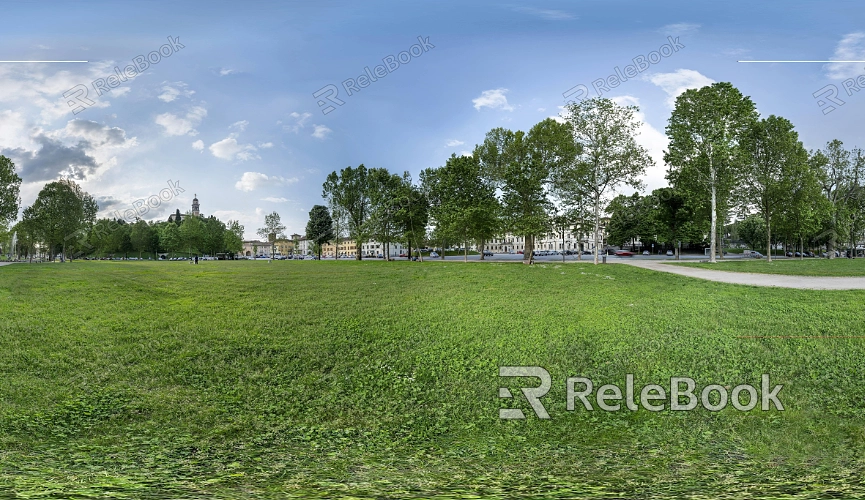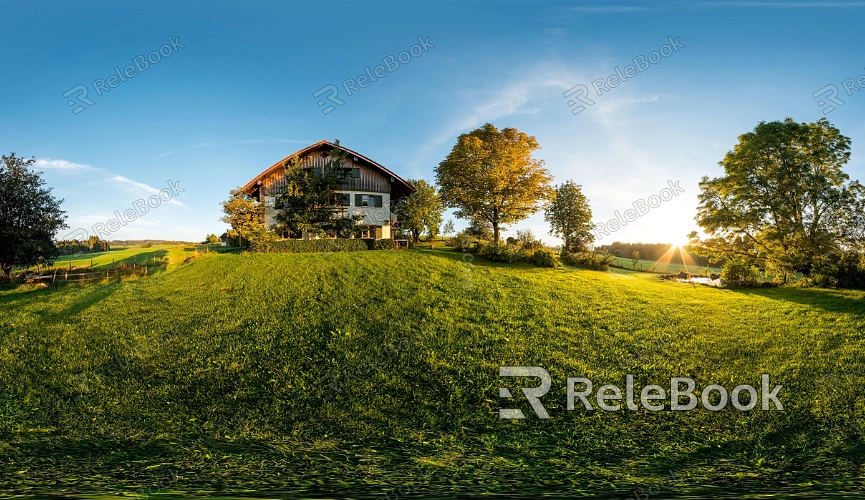Can HDR Forest Textures Improve Outdoor Scenes in Cinema 4D?
Recreating natural lighting and detailed environments in 3D software is a common challenge in architectural visualization, film production, and game development. HDR forest textures capture real-world lighting and shadow details, enhancing the realism of outdoor scenes. But can these textures significantly improve outdoor environments in Cinema 4D? In this article, we will explore how HDR forest textures can elevate Cinema 4D outdoor environments and provide practical tips for their effective use.

1. The Role of HDR Forest Textures
The main advantage of HDR (High Dynamic Range) images lies in their ability to capture a wider range of light and shadow details, making them ideal for simulating complex natural light conditions. In forest scenes, the lighting can be subtle, ranging from sunlight filtering through the leaves to shadows on the ground. HDR forest textures can make Cinema 4D renders more lifelike, increasing the overall realism of outdoor scenes.
Light Details: Traditional 8-bit images often struggle with bright areas, leading to overexposure. HDR images, however, preserve these details, making highlights appear more natural in your scenes.
Shadow Depth: HDR textures also retain more details in shadowed areas, preventing the blurring or distortion that can occur with standard textures.
2. Choosing the Right HDR Texture
Selecting the appropriate HDR forest texture is crucial for achieving the desired effect. Different forest environments may require various HDR images to match the lighting and atmosphere.
Resolution: For detailed realism, higher-resolution HDR images are preferred. In large outdoor scenes, low-resolution textures may degrade the overall quality of the lighting.
Exposure Range: Another critical factor is the exposure range of the HDR image. When working with extreme lighting conditions, such as bright sunlight and deep shade, an HDR texture with a wide exposure range ensures a smooth transition between light and shadow.
3. Applying HDR to Environment Lighting
In Cinema 4D, HDR textures are commonly used in environmental lighting setups to create more natural light propagation. Applying HDR textures to environmental light sources, like a sky object or panoramic dome, helps simulate realistic global illumination.
Light Source Direction: In forest scenes, the primary light source is typically the sun. When setting up HDR textures, make sure the direction of the light source aligns with the sunlight in your scene. This can be achieved by rotating the HDR image to match.
Brightness and Contrast: Adjust the brightness and contrast of the HDR texture to avoid overexposure or overly dark areas, ensuring a balanced lighting effect across the scene.

4. Enhancing Reflections and Refractions
HDR images are not only useful for environmental lighting but also for enhancing reflections and refractions, especially when working with water or reflective surfaces in your scene.
Water Reflections: Applying an HDR texture to water surfaces can dramatically improve reflection quality, allowing the water to reflect the sky and surrounding environment in a more realistic way.
Leaf Refractions: In forest scenes, the refraction of light through leaves can be enhanced using HDR lighting, making the leaves' transparency and details look more lifelike.
5. Bump Mapping and Detail Enhancement
Combining HDR textures with bump mapping can bring out intricate details in the scene. For example, surfaces such as tree bark, ground textures, and rocks can look more natural when illuminated with HDR light sources.
Ground Detail: By using HDR lighting on bump-mapped surfaces, elements like rocks, grass, and leaves on the ground will appear more three-dimensional and lifelike.
Tree Trunk Texture: Similarly, the texture details of tree trunks become more pronounced, adding a tactile quality to the scene under HDR lighting.
6. Optimizing Rendering Performance
While HDR textures can significantly improve render quality, high-resolution HDR images may put a strain on system resources. Optimizing your render settings is essential to ensure a smooth workflow when using HDR textures in Cinema 4D.
Sampling Settings: Adjusting the sampling settings in ray tracing can reduce unnecessary calculations and speed up render times without sacrificing quality.
Noise Reduction: During rendering, using denoising tools to minimize noise introduced by HDR lighting can further improve the final result.
7. Post-Processing and Effect Enhancement
Even after the initial render in Cinema 4D, post-processing is key to enhancing the final result.
Color Correction: Use post-processing tools to adjust contrast, brightness, and color saturation, making the HDR effects more vivid and vibrant.
Depth of Field and Lens Effects: Adding depth of field and lens flare effects can give the scene a cinematic feel, further enhancing the visual impact.
By applying these techniques, HDR forest textures can significantly improve outdoor scenes in Cinema 4D, enhancing both realism and natural light dynamics. If you're looking for high-quality HDR textures, Relebook offers a wide range of HDR textures, 3D models, and maps to help you create outstanding outdoor environments. Explore the resources on Relebook to take your projects to the next level and achieve impressive visual results.

